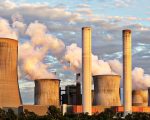The M&A cycle in global resources is accelerating, as it is considered lower risk to “buy” than “build”. Increased regulatory hurdles make it difficult to “build” anything. Companies are bidding for copper, as it is a vital ingredient in the green energy transition, due to its exceptional ability to conduct electricity and heat. Copper is essential for building electric cars and trucks, transmission lines, solar and wind farms. As a result, demand for copper is set to double by 2035, and a supply shortfall of 9.9 million tonnes will emerge by 2025, according to S&P estimates. To address this shortfall, $23 billion of annual investment in new projects is needed.
BHP Group’s bid for Oz Minerals is considered a strategic move that will be rewarded as the world moves towards green energy transition. Buying high-grade, long-life copper exposure in a politically stable jurisdiction while spot copper prices reflect a global economic slowdown is also considered a sensible move. BHP’s cash offer for OZL is an indication of where copper prices are headed. By acquiring copper exposure, BHP is increasing the weighting of copper in their portfolio and taking advantage of copper and copper equities being priced on backward-looking fundamentals.
Copper has traditionally been a highly economically cyclical commodity. However, it will start to lose its cyclical price volatility as it starts to be priced as a scarce critical metal for the green energy transition. The implications for copper prices and copper equities under that scenario will be materially positive. The demand for copper is set to turbocharge over the next 20 years, amounting to the equivalent of 60% of the current market size.
Electric car engines are expected to take up 55% of global demand over the next 20 years, with copper required for the battery packs inside EVs and the electric motors themselves. EVs require about 2.5 times more copper than internal combustion engine cars. A Class 8 truck, a typical 18-wheeler, will require a battery about 11 times the size of a passenger car battery, with the battery pack responsible for over 90% of copper demand in larger vehicles. Charging stations will also need to be built from scratch, with chargers requiring about 1 kg of copper and level 3 chargers needing about 4.5 kg of copper.
Transmission and distribution (T&D) applications represent close to 20% of current demand, with T&D infrastructure needing more than double the metal between today and 2040 to deliver net-zero emissions by 2050. The shift towards solar PV and offshore wind, which respectively consume two and five times more copper per megawatt of installed capacity than conventional thermal power generation, is also driving copper demand.
The launch of a copper ETF on the ASX will provide individual investors and family offices with ASX-listed global copper exposure. Despite the current discomfort in copper, there is a fantastic upside over the years ahead.











